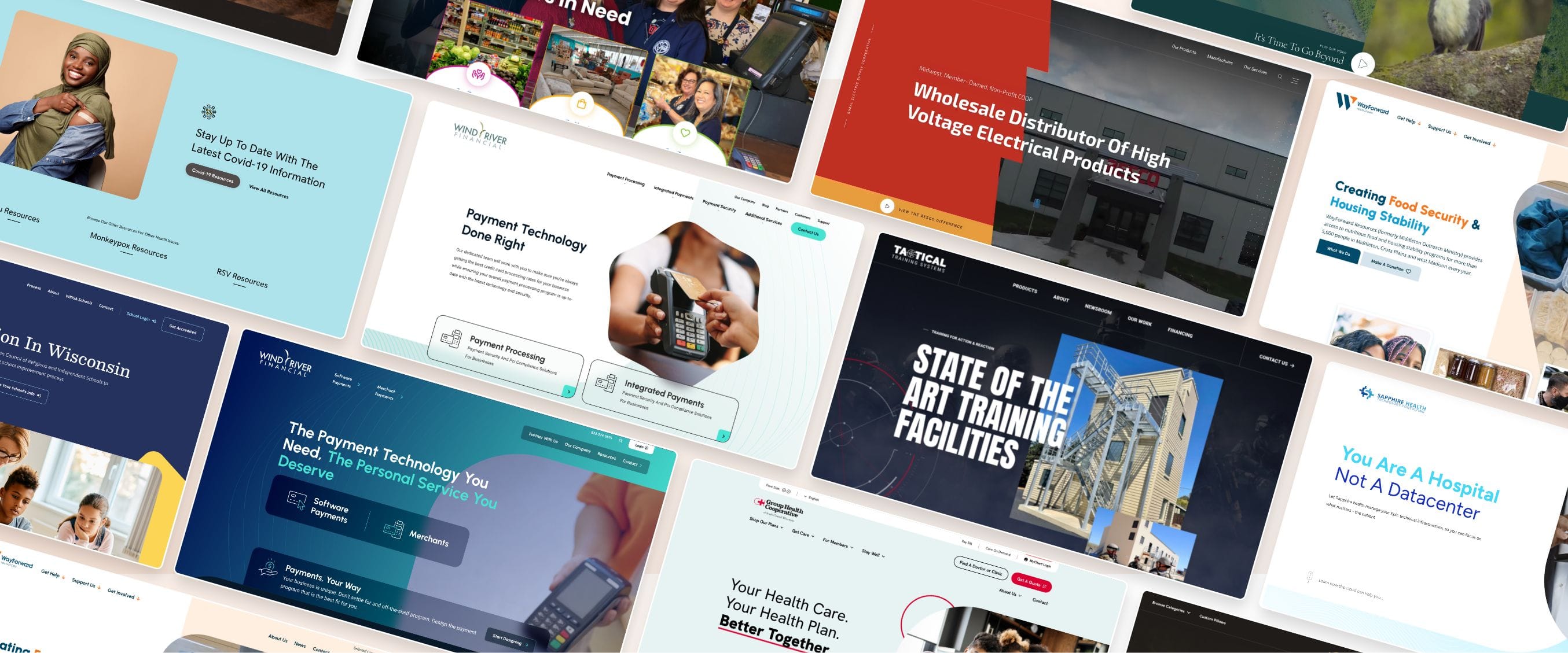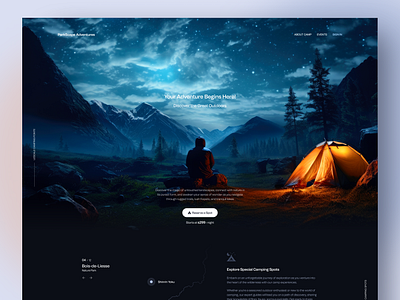Modern Internet Site Layout That Captures Focus and Transforms
In a progressively digital landscape, modern-day site style has become an essential consider capturing user interest and driving conversions. By strategically using visual power structure, receptive layouts, and involving interactive aspects, designers can develop experiences that not just draw in visitors however likewise help with purposeful interactions. Effective call-to-action strategies play a crucial function in guiding users towards desired end results. As we check out these essential parts, it ends up being clear that recognizing their interaction can significantly influence a site's efficiency and customer contentment. What are the crucial elements that absolutely make a difference?
Relevance of Visual Power Structure
Aesthetic pecking order is a vital aspect in site style, as it guides users' interest and improves their overall experience. By strategically arranging content, developers can route individuals to one of the most vital info first, thereby raising involvement and enhancing use. Effective visual power structure uses numerous strategies, including dimension, spacing, comparison, and color. Larger elements naturally draw the eye, while contrasting shades can emphasize key messages, making them stick out among more controlled parts.
Incorporating a rational flow in material arrangement is essential; for instance, placing one of the most vital details on top of a page promotes prompt recognition. Constant usage of typography, such as differing font dimensions and styles, helps establish a clear web content structure. This organization not just aids in navigation yet likewise constructs depend on, as individuals really feel a lot more comfy when they can conveniently discover what they are trying to find.
Inevitably, a well-executed aesthetic pecking order not only enhances aesthetic allure but likewise considerably impacts customer actions. By prioritizing vital aspects and ensuring a seamless experience, developers can successfully transform visitors right into customers, strengthening the value of this fundamental layout concept in modern site advancement.
Responsive Style for All Tools
Developing a smooth experience throughout numerous tools is vital in today's digital landscape, where users gain access to websites from tablet computers, desktop computers, and mobile phones alike. Receptive design is a critical technique that ensures sites adapt fluidly to various screen alignments, sizes, and resolutions. By utilizing versatile grids, images, and CSS media inquiries, designers can develop formats that preserve visual stability and functionality, despite the device being utilized.
The significance of receptive design expands beyond looks; it directly affects customer interaction and conversion prices. An internet site that operates well on all tools motivates longer visits and minimizes bounce rates, as users are extra likely to connect with content that is simple to navigate. Furthermore, internet search engine, particularly Google, focus on mobile-friendly sites in their rankings, making responsive layout a vital element of search engine optimization (SEARCH ENGINE OPTIMIZATION)
Incorporating responsive layout not just enhances customer experience however additionally improves the advancement procedure. By developing a solitary site that works across gadgets, companies can conserve time and sources contrasted to creating different mobile and desktop computer versions. Ultimately, responsive style is a fundamental technique for contemporary web site layout, making sure ease of access and contentment for all customers, regardless of their device.
Engaging Interactive Aspects
While a responsive style lays the foundation for a useful internet site, including engaging interactive components is critical for recording individual interest and cultivating deeper connections. Website Design. Interactive components, such as computer animations, tests, and clickable infographics, produce a much more vibrant individual experience, encouraging visitors to invest more time on the site
Incorporating interactive attributes can likewise lead customers with complicated information, making it less complicated to absorb web content. For instance, interactive sliders can illustrate product variants, while embedded video clips can supply presentations or reviews that reverberate even more than static photos or text. Gamification strategies, like rewards for involving or completing jobs with web content, can enhance customer motivation and retention.
Reliable use of interactive elements not just enriches the customer experience however can additionally bring about higher conversion rates. By making communications helpful and enjoyable, services can grow a sense of commitment and trust fund with their audience. It is essential to balance interactivity with efficiency; extremely complicated attributes may impede site speed, adversely impacting user contentment. Eventually, integrating properly this contact form designed interactive aspects can significantly boost a web site's efficacy, driving engagement and conversions in today's affordable digital landscape.
Structured Navigation Practices
Reliable navigation is a keystone of any successful site, as it straight affects user experience and web content availability. Structured navigating practices make certain that individuals can easily locate information, enhancing Visit Website their communication with the website. A well-structured navigating menu should be simple and intuitive, typically including a restricted number of main categories to stay clear of frustrating visitors.
To achieve structured navigation, developers must prioritize a hierarchical framework that rationally organizes content. Implementing breadcrumb routes can provide customers with context about their current location within the site, permitting for smooth backtracking. Additionally, using drop-down menus can properly save area while still providing accessibility to subcategories.
Responsive layout is important, as navigating ought to be practical throughout all tools (Website Design). Mobile customers, particularly, benefit from touch-friendly food selections and collapsible sections that keep usability without endangering looks

Efficient Call-to-Action Approaches
A well-crafted call-to-action (CTA) is essential for leading users towards desired end results on a site, as it encourages them to involve with web content or buy. To optimize their performance, CTAs need to be clear, compelling, and strategically put throughout the site.
First, make use of action-oriented language that communicates urgency or worth, such as "Start," "Sign up with Now," or "Case Your Discount rate." This language not only inspires users however also establishes clear expectations concerning the next actions.
2nd, take into consideration layout components; CTAs ought to stand apart aesthetically through contrasting shades, sufficient whitespace, and popular positioning. A switch that is easy to see and click rises the chance of customer communication.
Furthermore, personalizing CTAs based on customer behavior or demographics can dramatically improve involvement. Tailored messages resonate a lot helpful resources more with individuals, driving higher conversion rates.

Final Thought
These components collectively enhance user experience, making sure that site visitors stay involved and inspired to check out material additionally. By prioritizing these style concepts, organizations can dramatically enhance individual retention and conversion rates, inevitably leading to better success in the digital landscape.
In a progressively digital landscape, modern internet site layout has emerged as a critical factor in recording individual attention and driving conversions.Visual power structure is a critical component in site design, as it overviews individuals' attention and boosts their general experience.The importance of receptive style extends past appearances; it directly impacts customer interaction and conversion prices.Integrating responsive layout not only boosts individual experience but additionally enhances the advancement process. Eventually, responsive layout is an essential approach for contemporary website style, guaranteeing accessibility and contentment for all individuals, no matter of their gadget.